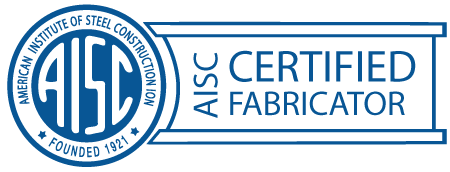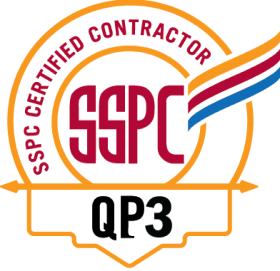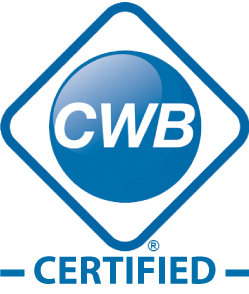This brief guide outlines all the necessary stages in storage tank maintenance, for the safe containment of oil, chemicals, pulp, paper, etc. Regular and thorough tank inspections are critical to proactively identifying and repairing potential problems, which might lead to tank failure and disastrous environmental contamination or workplace injuries.
Tank Inspection and Maintenance
All storage tank inspections must be performed against the approved drawings, specifications, and standards, and according to any applicable legislation.
Inspections are carried out periodically:
- Monthly in-service routine inspections undertaken by the owner’s inspector.
- Annual in-service routine inspections undertaken by the owner’s inspector.
- 5-yearly inspection undertaken by a certified external inspector.
Monthly Tank Maintenance Inspection
Regular storage tank repair and maintenance will extend safe operating life. You can use the following storage tank inspection checklist for routine monthly maintenance:
- If all your answers are “Yes”, your tank is in good condition.
- If any answers are “No”, schedule repairs in the comments section. Welding, grinding, and other hot works require the tank to be taken out of service.
| Monthly Storage Tank Inspection |
Status |
Comments/Actions/ Date Corrected |
| 1. Visual Inspection |
|
|
| Are the tank’s interior and exterior shell plates in good condition? |
|
|
| Is the tank’s bottom plate in good condition? |
|
|
| Is the fixed/floating roof in good condition? |
|
|
| Is the aboveground piping in good condition? |
|
|
| Are the foundations and supports in good condition? |
|
|
| Is the secondary containment system in good condition? |
|
|
| Is the collision protection system in good condition? |
|
|
| 2. Containment Areas |
|
|
| Is the containment area free of standing water? |
|
|
| Are the drain valves in a closed position? |
|
|
| Is the containment area clear of fire hazards and debris? |
|
|
| 3. Leak Detection System |
|
|
| Is the leak detection system being monitored? |
|
|
| Is the containment area clear of regulated substances? |
|
|
| Are the tank and piping intact, without any evidence of release? |
|
|
| Is the ancillary equipment intact, without any evidence of release? |
|
|
| 4. Ancillary Equipment (if installed) |
|
|
| Are the valves functioning properly? |
|
|
| Are the vents clear of obstructions? |
|
|
| Is the monitoring device functioning properly? |
|
|
| Is the overfill prevention system operating properly? |
|
|
| 5. Safety Precautions |
|
|
| Is safety equipment in place and operational? |
|
|
| Are safety precaution instructions posted? |
|
|
| Is the tank system secured to prevent vandalism and unauthorized access? |
|
|
Annual Tank Inspection
These important annual checks supplement the monthly checklist:
| Annual Storage Tank Inspection |
Status |
Comments/ Actions/ Date Corrected |
| 1. Fencing and Access |
|
|
| Is the site securely fenced and locked to unauthorized entry? |
|
|
| Does the ladder have a vandal guard? |
|
|
| Is the ladder locked in a base bell? |
|
|
| Does the ladder have restricted access? |
|
|
| 2. Overflow Pipe Discharge |
|
|
| Is the flap gate in good order? |
|
|
| Is the overflow pipe screen intact and unclogged? |
|
|
| 3. Roof Venting |
|
|
| Is the roof vent screen intact? |
|
|
| Are air gap seals present and intact? |
|
|
| Are all couplings present and intact? |
|
|
| 4. Cathodic Protection System |
|
|
| Are all cathodic caps intact and closed? |
|
|
| Is the CPS inspection record up-to-date? |
|
|
5-Year Inspection
The external inspector examines all the annual inspection items. Structural evaluation tests are conducted, including assessing the condition of the interior and exterior coatings.
The inspection encompasses site restrictions, proximal electric lines, or other structures that could interfere with containment.
Federal U.S. EPA, state-level public health considerations, and OSHA regulations must be considered if the tank requires upgrades. If tank rehabilitation is necessary, checks are conducted to establish if there is sufficient space to stage the necessary equipment.
Why is it Important to Clean and Inspect Tanks?
Scheduled tank inspections and maintenance should be your top priority, to keep your tank in optimal condition. This is essential to:
- Prevent hazards: Cracks, thinning walls, corrosion, or bad welds may cause dangerous leaks and hazardous working conditions. With ongoing inspection and rectification, you’ll maintain your daily production and safeguard your employees.
- Extend the tank’s lifespan: Periodically checking your tank’s status extends its reliability and lifespan. You’ll get the greatest possible return on your investment.
- Comply with standards and regulations: When a fuel tank is regularly checked and maintained against legal and industry standards, your company is protected from liability.
National Fire Protection Association (NFPA) and American Water Works Association (AWWA)
Your tank must be fully compliant with federal, state, and local regulatory requirements. The applicable NFPA and AWWA regulations and inspection frequency are dictated by the type of tank and its contents. For example, is the storage tank underground or above ground? Is it steel or concrete? Does it store hazardous substances? Complete in-service and out-of-service inspections should be completed by certified technicians in accordance with NFPA and AWWA standards.
Conclusion
T BAILEY LLC specializes in the manufacture and installation of storage tanks. As such, we know that the importance of a proper tank inspection cannot be overstated. Our extensive experience and superlative quality have established us as an industry leader in the Northwest. Contact us today to discuss your requirements.






